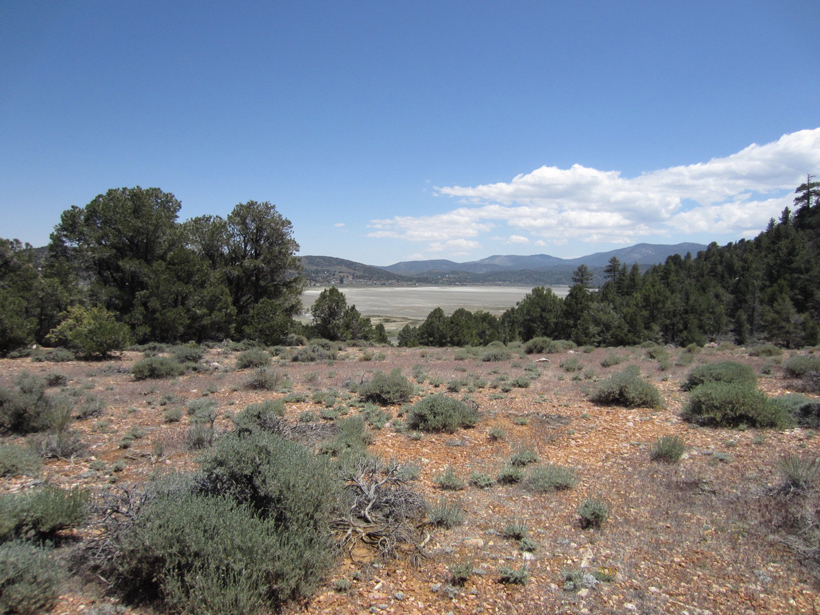Source: Paleoceanography and Paleoclimatology
Southern California is one of only a few places outside the Mediterranean Basin to enjoy a Mediterranean-like climate. Mild summers and wet winters have long supported some of the state’s (and the country’s) most biodiverse locations. But Southern California is warming faster than nearly anywhere else in the contiguous United States, and climate projections for the state forecast higher temperatures and increasingly erratic precipitation—conditions that could drive the Mediterranean region farther north and leave in its place a subtropical desert.
Indeed, new research suggests this has happened before. Glover et al. looked at natural variation in vegetation and wildfire to better understand how Southern California will respond to climate change in the future. The team examined a sediment core from Baldwin Lake in the San Bernardino Mountains, located in a region where the pine-dominated, Mediterranean woodland starts to give way to the sagebrush-dominated subtropical desert that prevails in the state’s interior.
Studying the layers of the 27-meter core allowed the researchers to see how climate forcing affected erosion rates, wildfires, and vegetation between 120,000 and 15,000 years ago. To track weathering and erosion, the researchers measured biogenic silica—a proxy for paleoproductivity—and other bulk organics, as well as the molar ratio of carbon to nitrogen, which can help determine whether organic materials come from terrestrial or aquatic sources. The data revealed that the lake shifted several times between productive and unproductive states. During the unproductive periods—between 32,000 and 14,000 years ago, for example—cool, glacial conditions prevailed, and weathering and erosion increased in the lake basin.
The team also analyzed charcoal particles and pollen deposits in the core, which suggested that the local vegetation community alternated between sagebrush steppe and coniferous forest over millennia. Roughly 27,000 years ago, during the last glacial period, charcoal levels plummeted, which could mean that the climate did not support wildfires, according to the authors. Pollen levels at that time reveal a shift in forest species that may have been related to the lack of fire.
The researchers found that over long timescales—of 10,000 years or more—summer insolation was a more important influence on the state of the lake than sea surface temperatures or carbon dioxide levels. The new study indicates that the relationship between vegetation, sedimentation, and climate processes in Southern California has long been complex and that detailed pollen and charcoal records are urgently needed to constrain how hydroclimatic variation will affect vegetation change and wildfire on centennial and decadal timescales. (Paleoceanography and Paleoclimatology, https://doi.org/10.1029/2019PA003628, 2020)
—Kate Wheeling, Science Writer
Citation:
Wheeling, K. (2020), Southern California climate change over 100,000 years, Eos, 101, https://doi.org/10.1029/2020EO139981. Published on 11 February 2020.
Text © 2020. AGU. CC BY-NC-ND 3.0
Except where otherwise noted, images are subject to copyright. Any reuse without express permission from the copyright owner is prohibited.

